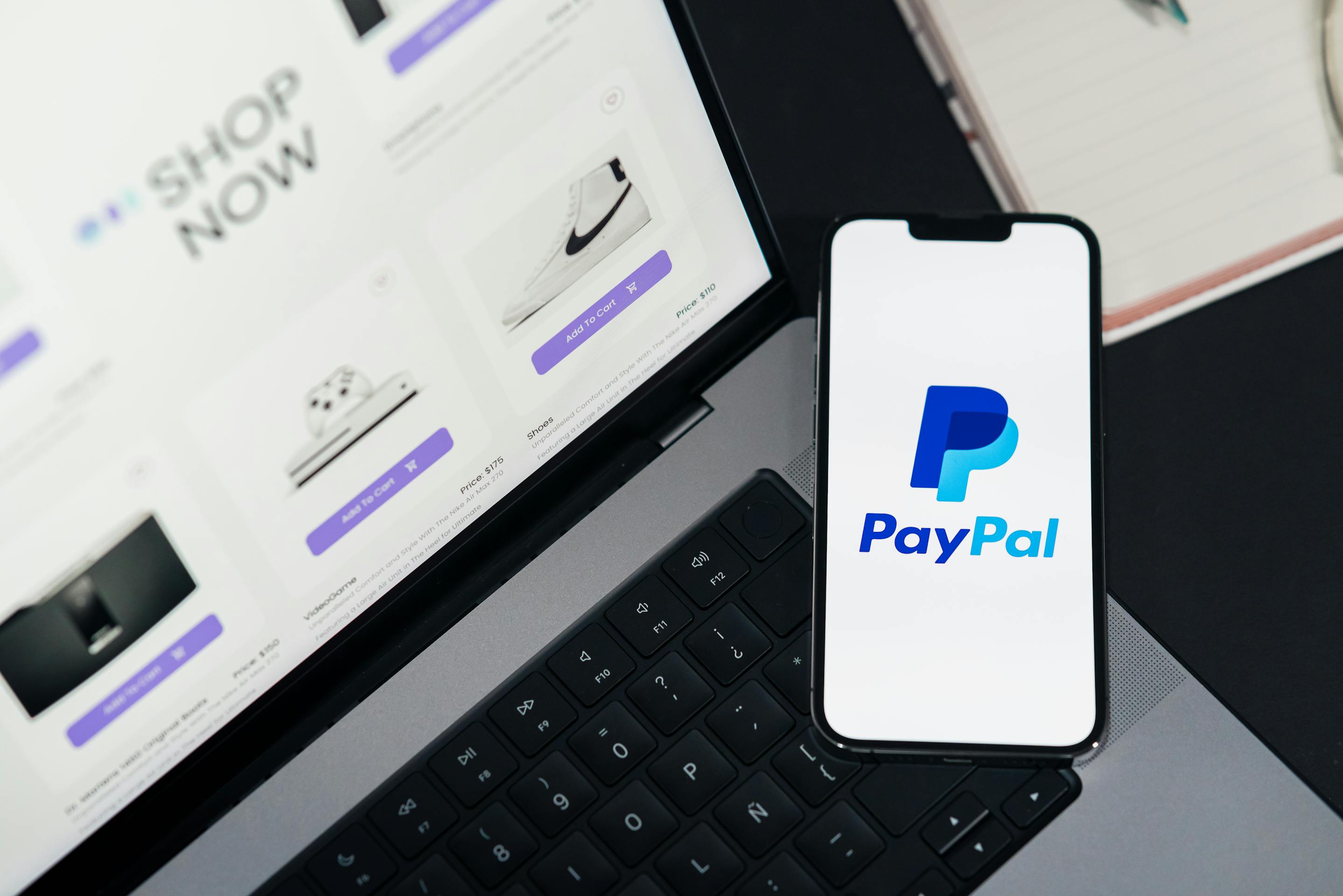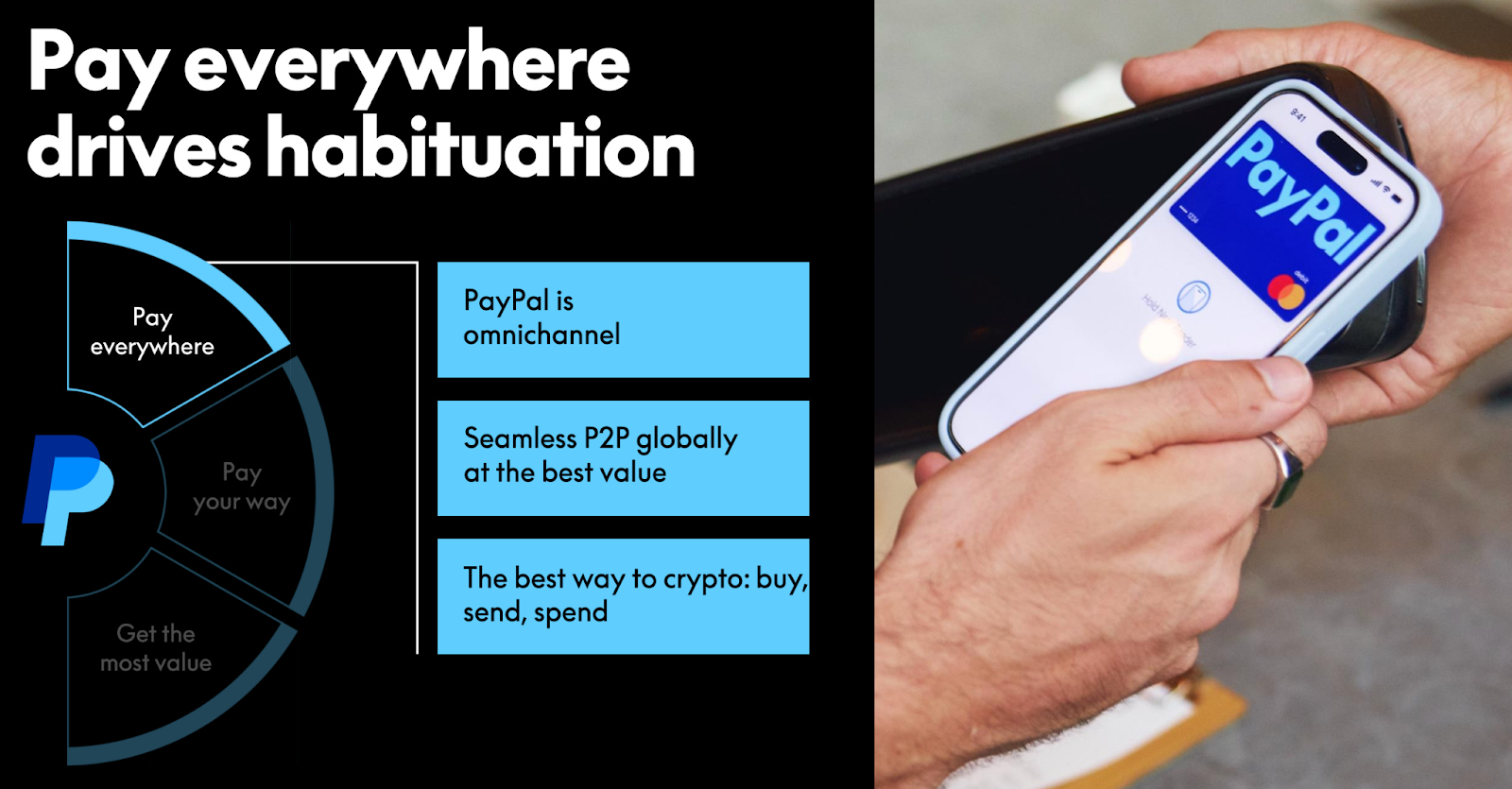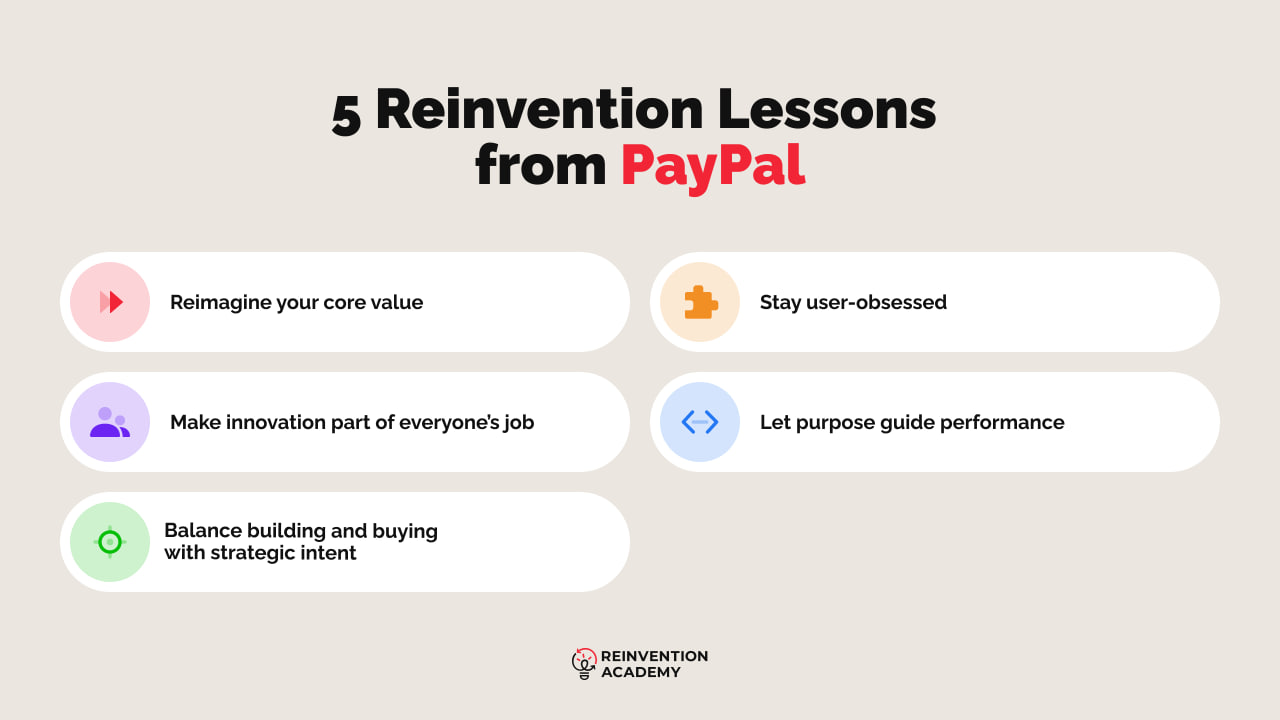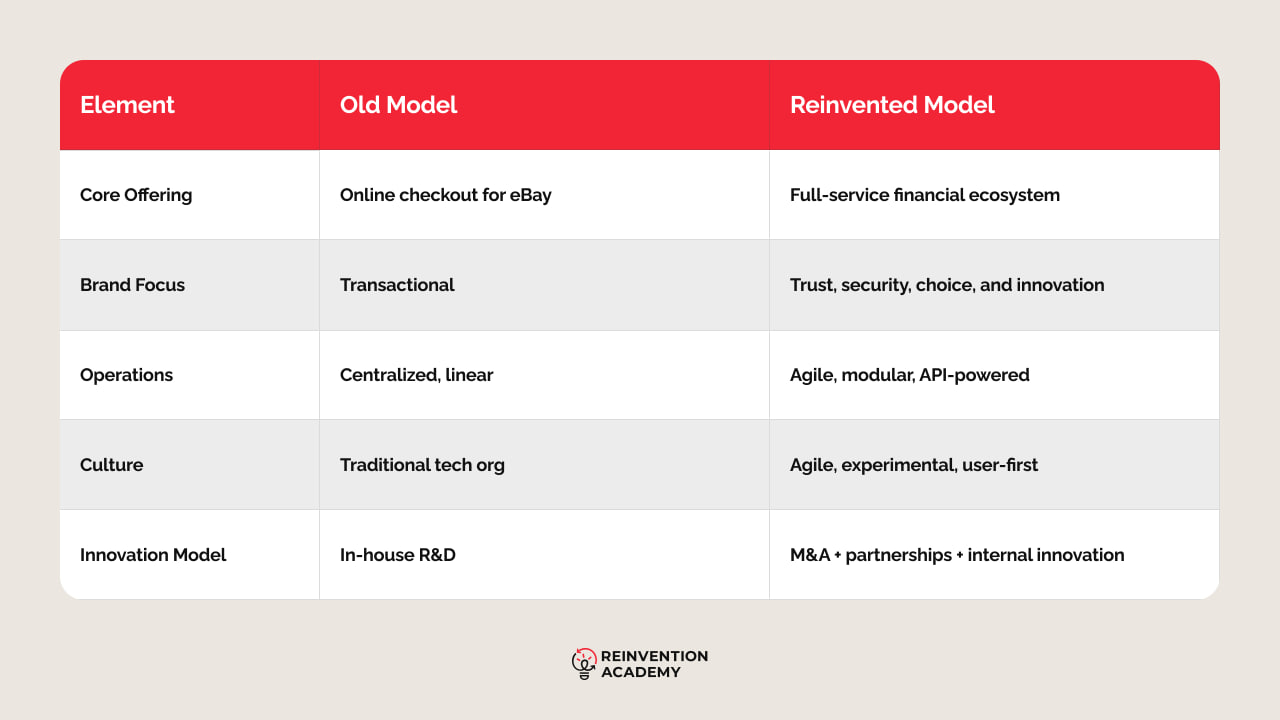From Payment Button to Fintech Powerhouse: PayPal Reinvention Case Study
As one of the biggest fintech company on Earth, PayPal's near 30 years of prominence have been threatened with downfall. We break that down in this piece.

Why PayPal Needed Reinvention
In the early days of purchasing products online, it was quite a nervous affair. Many of the online forms people would fill out looked shoddy at best. Credit card information got stolen a lot, and scams abounded. So when PayPal came onto the scene, the option of exchanging money just through email addresses was a massive hit. Most of the brains went into expanding financial services as a Java monolith.
It reached out to so many new users so fast that it became hampered by its weight. The development cycles were very long, and minor failures could cause issues throughout the system. Coding across the team was sometimes poorly coordinated. Beyond that, many other fintech companies were giving PayPal some heat, such as Coinbase and legacy credit card processors expanding into money transfers like Visa, Mastercard, and American Express, along with the more recent Google and Apple Pay.
PayPal was initially purchased by eBay in 2002 before its stagnation held it back from its digital finance innovation for several years. It was in 2015 that the company split off and transformed into a publicly traded company. In 2018, it even faced a turning point: to evolve or risk becoming obsolete. It expanded its commerce reach and its value skyrocketed over 75 billion dollars, nearly doubling its value ten years ago. This wasn’t before it went stale in 2023 again, losing profitability, before launching a whole new ecosystem that exploded it back to dominance.
PayPal’s Reinvention Strategy: Beyond the Button
After PayPal broke off from eBay in 2014, PayPal was in need of someone with a huge background in fintech. That first godsend was Dan Schulman, taking over in 2014. He had worked at AT&T, Priceline, American Express, and Virgin Mobile. He was known for his customer-first mindset, fintech transformation experience, and belief in socially responsible business. Then, when Alex Chriss took his spot in 2023, he unveiled PayPal 2.0, which currently has the company at a 5% growth rate.
Expanding Financial Services
There were many dramatic entries made for the PayPal business strategy since simply facilitating payments was not going to cut it. Instead, PayPal did PayPal Credit, previously called Bill Me Later, and Working Capital loans for small businesses. This fintech transformation provided more ways to create cash flow and afford purchases without switching platforms.
PayPal 2.0 now features $1.7 trillion worth of payment volume with 400 million active accounts. Right now, users get rewards and promotions to put more money in their pockets automatically using the best option available with their PayPal digital wallet. PayPal has gone from being a payments processor to a reinvention in fintech, pursuing commerce.
Building a Platform Ecosystem
Paypal recently launched PayPal Open, an openly modifiable, modular platform. The platform was opened up to developers with special developer tools, allowing countless websites and apps to integrate PayPal. No longer was it a closed-loop service. On top of that, it also launched the PayPal super app, which combines payments, shopping, savings, and investing.
Now, Crhiss is focusing on more omni-channel payments and personalization with a myriad of merchant tools for the PayPal ecosystem model, crafted to amp up customer conversion and incentivize them to stay. It’s also been bolstering its digital finance innovation with branded checkouts as a Verifone partnership adds even greater functionality to its in-store payments.
Two Enablers That Fueled PayPal’s Transformation

Since Schulman, PayPal's business strategy has focused on giving employees room to experiment and work their magic in new fintech projects and allowing merchants to integrate PayPal into their services.
Culture of Innovation
One of the biggest reasons PayPal reinvented itself was drawing in the most talented employees and enticing them to stick around long enough to keep the company healthy. A “Net Disposable Income’ metric was invented to take care of their employees’ needs and contentment. He also encouraged them to focus on unconventional solutions like PayPal crypto integration.
PayPal strove to build on a culture rewarding experimentation, agility, and thinking ahead. It tried to think of itself as an underdog and nimble tech startup, constantly testing, iterating, and evolving. The platform developed easier ways for freelancers to get paid across borders and embraced mobile-first and cloud native approaches early on.
Strategic Acquisitions
PayPal's acquisitions included many timely companies to fill the gaps and bring in new capabilities, particularly in new countries.
- One of the significant such places was when it spent almost a billion dollars on Venmo and Braintree. This ushered in a younger, mobile-first generation that used peer-to-peer payments.
- iZettle, which was nicknamed the Square of Europe, facilitated point-of-sale hardware and served brick-and-mortar businesses.
- Acquired for 4 billion dollars, Honey is a browser extension offered personalized shopping tools, coupon aggregation, and deal alerts. It moved PayPal further up the consumer journey, from checkout to discovery.
- Japanese BNPL, Paidy, helped let PayPal into Asia, revolving around installment-based shopping

Dr. Nadya Zhexembayeva’s Reinvention Lens on PayPal
Dr. Nadya Zhexembayeva is an established author on the topic of reinvention. She has written numerous books on the experiences that many companies have had in the face of rapidly changing times. Gone are the days when a company could just invent a handy product and continue to provide the exact same service unchanged for decades. The World Wide Web and fintech have led to companies replacing companies every few years. For that reason, she places a special emphasis on lessons from PayPal’s strategy.
One of the fascinating things about PayPal’s case study on reinvention is that it started as an innovator from the beginning, solving the issue of e-commerce insecurity and fintech transformation during the early Internet days. What Zhexembayeva hammers home is the obligation in the modern business era of not constantly changing a company’s identity and the product it offers, but finding the absolute core strength that the customer base enjoys and shedding things that aren’t as remarkable. Rather than holding onto old models, companies have no choice but to discover new ways to deliver their core values and identity to their audiences and reach new ones.
In PayPal’s case, the pressure of new competitors surfacing left them unable to simply coast on the amazing service that blew up in the year 2000. Instead, they continually extended the PayPal business strategy and payment conveniences that it originally conceived. Part of this meant giving people better access to credit and opening up PayPal to be personalized and worked on by other software developers. Another great catalyst for it has been AI.
5 Reinvention Lessons from PayPal for Business Leaders
On the heels of this dramatic PayPal Case study, there are a lot of lessons to be drawn. Here are the top 5 PayPal reinvention takeaways:
- Reimagine your core value: PayPal split from eBay; it didn’t try to recreate what it lost. Ask what larger purposes it could serve.
- Make innovation part of everyone’s job: At PayPal, innovation wasn’t isolated to a single team—it was a company-wide digital finance innovation mindset. Business leaders should create structures where experimentation is normalized and rewarded, not siloed or delayed.
- Balance building and buying with strategic intent: PayPal didn’t acquire companies at random—PayPal acquisitions filled critical gaps or accelerated its platform vision.
- Stay user-obsessed: In enabling BNPL, crypto integration, and working capital loans, everything was rooted in user behavior and demand. Lessons from PayPal’s strategy suggest businesses should prioritize features that matter to their users.
- Let purpose guide performance: Schulman and Chriss’ leadership emphasized values like inclusion, accessibility, and employee well-being as central to PayPal’s strategy—not as side projects. That purpose attracted talent.
PayPal Reinvention at a Glance

The Final Transaction: Why PayPal’s Reinvention Pays Off
How PayPal reinvented itself is more than just a survival story; it’s a fintech transformation lesson for how companies must force themselves to rise into something better and never rest on the past in the modern era. The PayPal case study not only involved expanding its revenue streams but also deepened its relevance in the lives of users and merchants alike.
For today’s business leaders, the lesson is clear. Reinvention in fintech isn’t a one-time maneuver: it’s a continuous, deliberate process. And when done with intention, courage, and clarity, it pays off, not just in market share, but in lasting impact.


.svg)